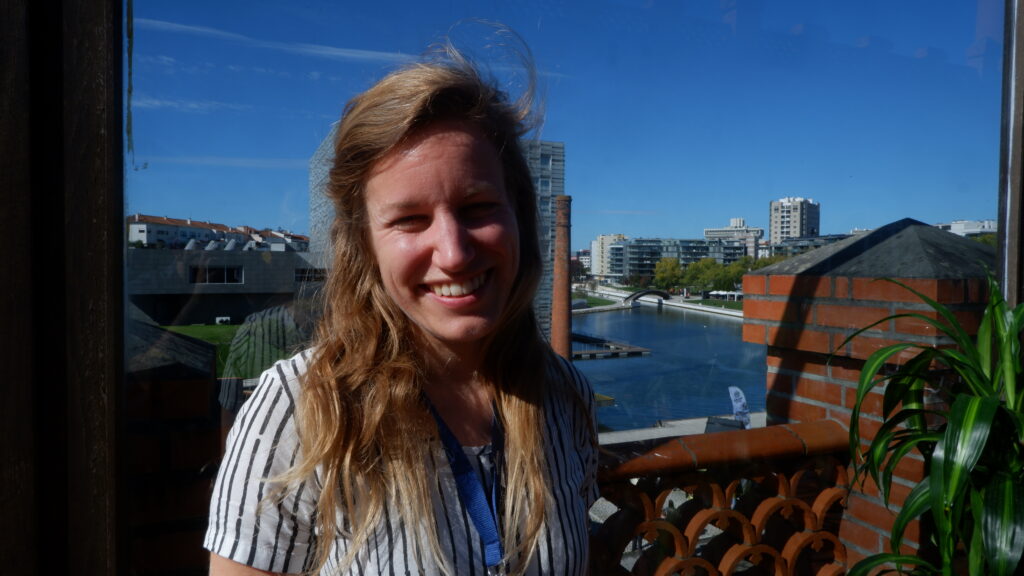Explore the stories of pioneers striving for sustainability in a complex world, balancing ideals with financial realities.
In a world increasingly aware of climate change, working to pay the bills without compromising ideals can seem like a juggling act. But some pioneers are proving that it is possible to stand firm in the fight for a more sustainable planet, even when the personal and professional costs are high. The stories of Ermi van Oers, creator of the Living Light project, and Ricardo Nascimento, a filmmaker who focuses on works that promote environmental awareness, reveal this path full of tensions and contradictions with rawness and hope.
Designing against the system
Ermi van Oers, a Dutch designer, has made sustainability her creative axis by designing lamps powered by plant energy. More than a technological breakthrough, this product is a manifesto: a call to redefine the relationship between man and nature. But this dream, like so many others, was not born without sacrifice.
When you start collaborating with nature instead of using it as a free commodity, everything changes,” says Ermi. This philosophy, while inspiring, has brought her into a field where commercial demands often clash with her values. Living Light prototypes are neither cheap nor easily accessible, something Van Oers meets with pragmatism: ‘The experience is magical, so beautiful that people are willing to pay more for it.
This comment reveals an uncomfortable truth: sustainability remains a luxury for many. The Dutch designer walks a fine line between innovation and commercialisation, knowing that over-committing her project to her professional ambitions could dilute the impact of her message.

Storytelling to inspire
For his part, Ricardo Nascimento sees film as a way to touch the hearts of those too busy to read science news or join climate marches. But even film, a seemingly free tool, has its own challenges. In an age dominated by algorithms and viral content, environmental storytelling has to be compelling from the start. First you have to get attention, and attention is commercial. You have to engage people and capture their imagination, and then you have to get the message across.
Nascimiento knows that working for an ideal does not mean sacrificing everything. Instead, he advocates a model in which the balance is achieved step by step. First, make money and make sure you have the free time to work on the projects you are passionate about. While pragmatic, this strategy reflects the limitations of those who want to change the world without giving in to the system they are trying to reform.
The tension between ideals and survival
Both stories highlight a fundamental truth: working for conviction, whether through design or art, does not mean escaping the real world. Invoices, deadlines, difficult clients and the need to market are inevitable parts of the journey. However, both Ermi and Ricardo have chosen not to let these demands completely define their lives.
In the words of Ermi van Oers: ‘We often believe that things have to be a certain way, but everything is just a story that we build. This reflection touches on a profound point: the world we live in is shaped by economic and social narratives that we accept as absolute truths. Questioning them is not only necessary, it is revolutionary.
Ricardo Nascimento, for his part, stresses the importance of human stories in creating deep emotional connections. It is not about showing images of a melting glacier or an endangered animal, but about illustrating how climate change affects real people’s lives. This approach sets him apart, but also poses the challenge of translating complex issues into accessible narratives without diminishing their depth.

A possible balance or a mirage?
Both creators illustrate different paths to the same goal: to live according to their ideals while facing the demands of the modern world. Their efforts raise a crucial question: Is it possible to live authentically in a system designed to put profit before principle?
One possible answer emerges from their strategies: cooperation and patience. For Van Oers, working with communities and businesses allows him to implement his sustainable technology on a larger scale, securing revenue while impacting local communities. Meanwhile, Nascimento suggests a step-by-step approach, slowly bridging the gap between economic survival and passion projects.
Reflections for a generation searching for meaning
Their stories resonate particularly with young people and academics seeking answers to this dilemma. In a hyper-connected and crisis-ridden world, being idealistic can seem like a monumental task. But Ermi and Ricardo teach us that it is not about choosing between extremes but finding the balance point where action is possible.
Sustainability does not have to be a sacrifice, nor a privilege. It can be a daily practice that thrives on small changes as well as big ambitions. And while individual struggles will not solve all the world’s problems, every step forward, no matter how small, contributes to a collective narrative that redefines how we live, work and dream.
Because, as the artist concludes, ‘when we work with nature, we all win’.
At the intersection of creativity and survival, there is a space where ideals not only survive, but thrive. The challenge is to build that space, an act of resistance worth every sacrifice.
Complementary activities
- Create a presentation comparing other environmental projects that integrate technology and sustainability.
- Write a short essay on how your local community can adopt sustainable practices inspired by Ermi’s or Ricardo’s work.
- Develop a visual campaign (poster or video) that creatively promotes an aspect of environmental awareness.



